I packed up my backpack and embarked on yet another adventure; from the vibrant streets of Thailand to the mystical wonders of Siem Reap, Cambodia. My destination? The awe-inspiring Angkor Wat, Ta Phrom, and the mysterious Bayon Temple. Join me as we uncover the secrets of these ancient marvels, encounter wild monkeys, and immerse ourselves in the rich history and culture of this enchanting land.
Our journey begins with a short flight from the bustling streets of Bangkok and the sandy shores of Pattaya, to the serene town of Siem Reap. As we touch down, a wave of excitement takes over, fueled by the promise of discovering the treasures hidden within the ancient temples.
After settling into The Cyclo d’Angkor Boutique Hotel, I headed to the vibrant Pub Street for a taste of Cambodian cuisine. The air is filled with the aroma of spices and the lively chatter of fellow travelers. The night market beckons with its colorful stalls, offering everything from handmade crafts to exotic street food.

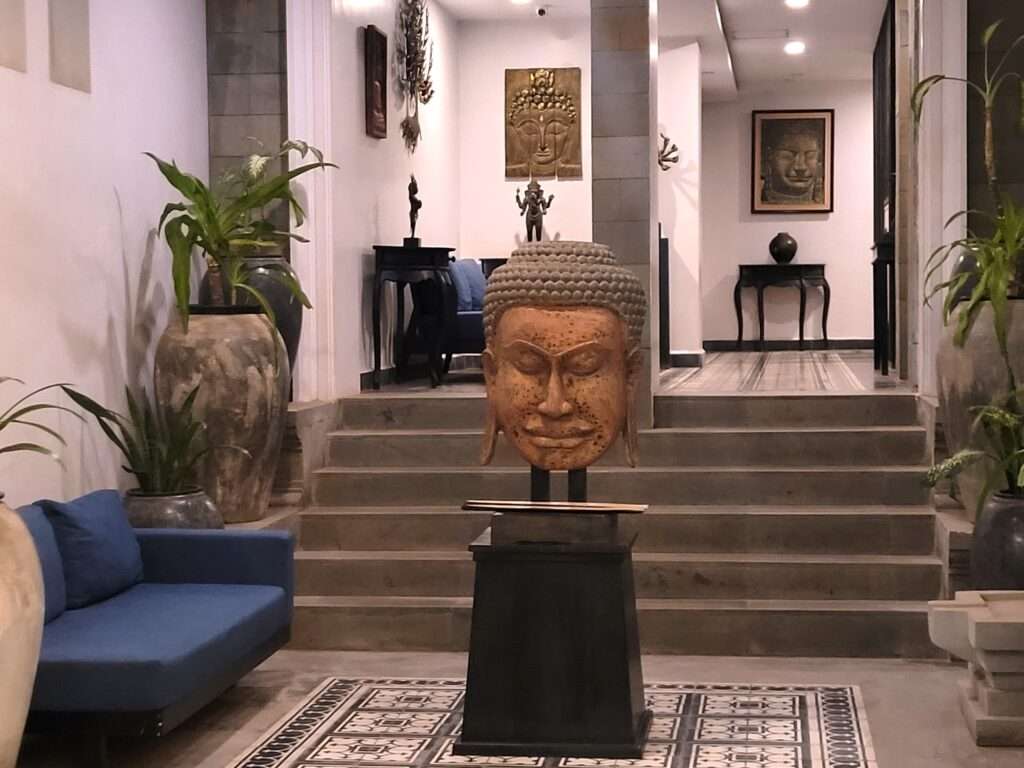



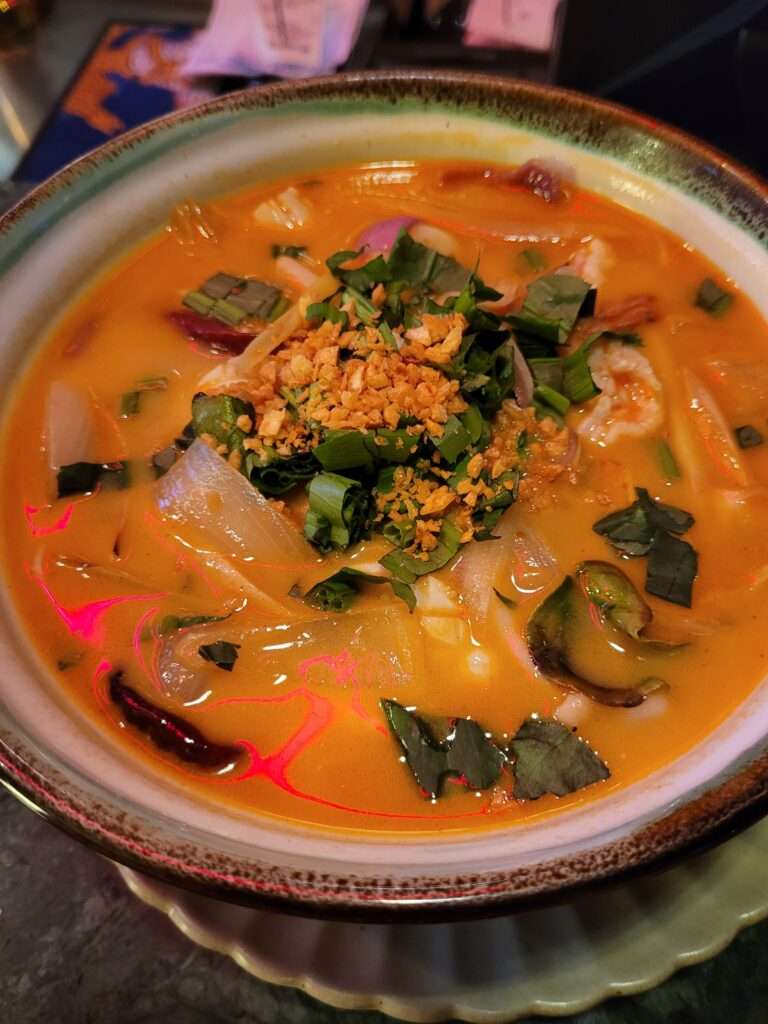
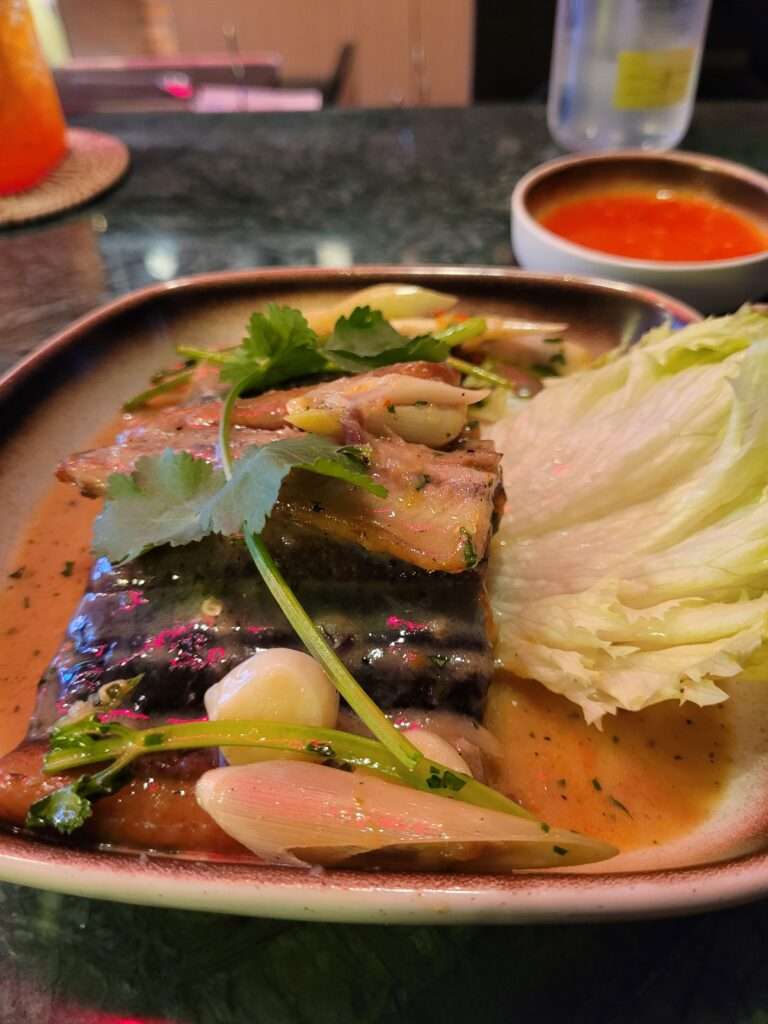
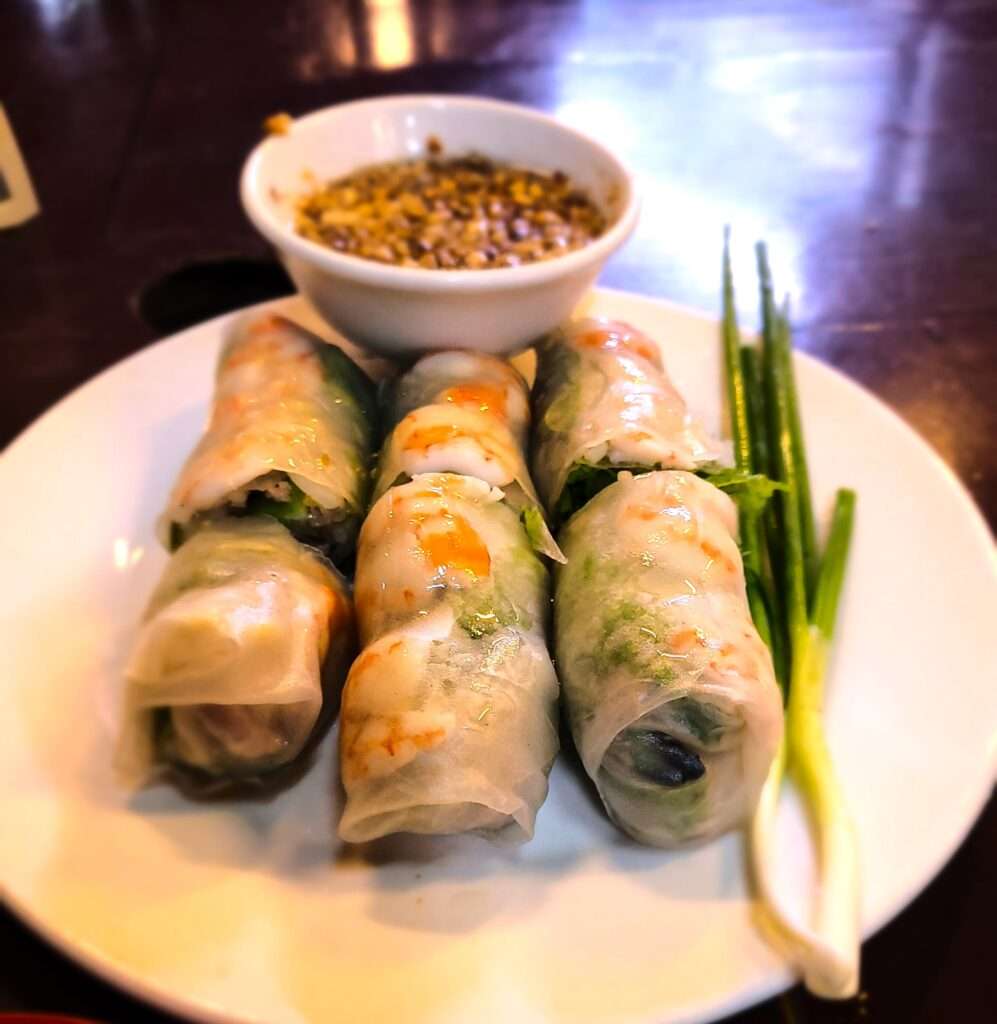

I arose early and ventured into the heart of Angkor Archaeological Park to witness the breathtaking views of Angkor Wat. The temple’s silhouette against the hues of the Cambodian sky is a sight to behold – a moment frozen in time.
As we explore the intricate carvings and towering spires of Angkor Wat, the history and spirituality of this ancient masterpiece come to life. The sheer scale and architectural brilliance leave us in awe, reminding us of the Khmer Empire’s grandeur.
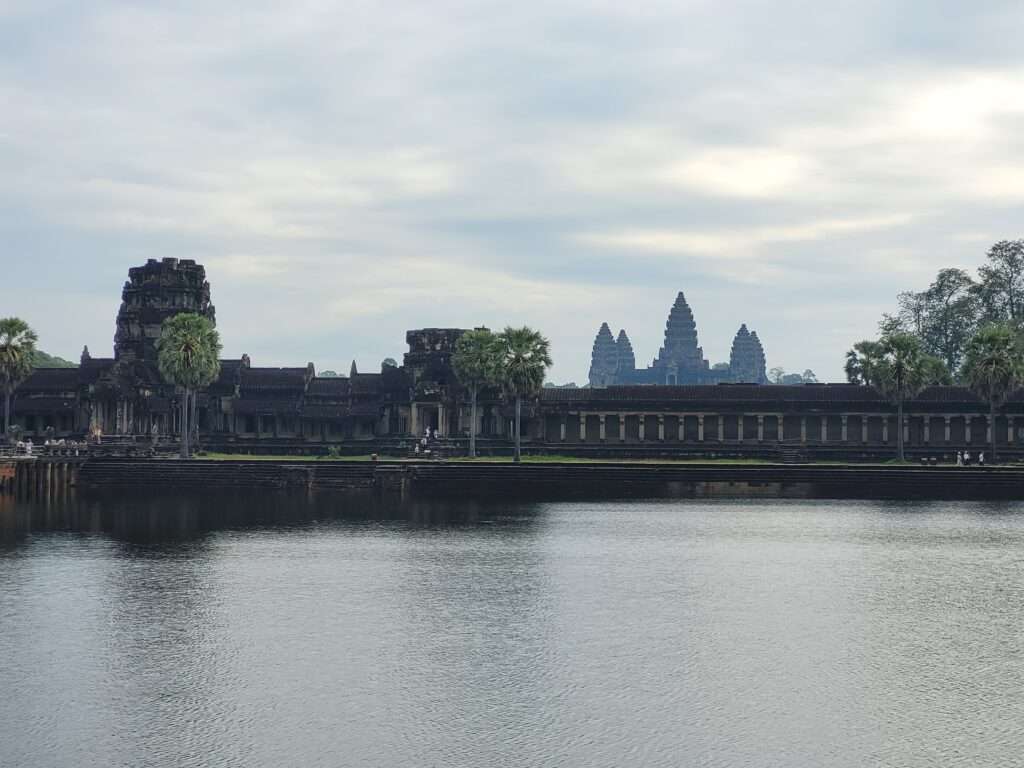
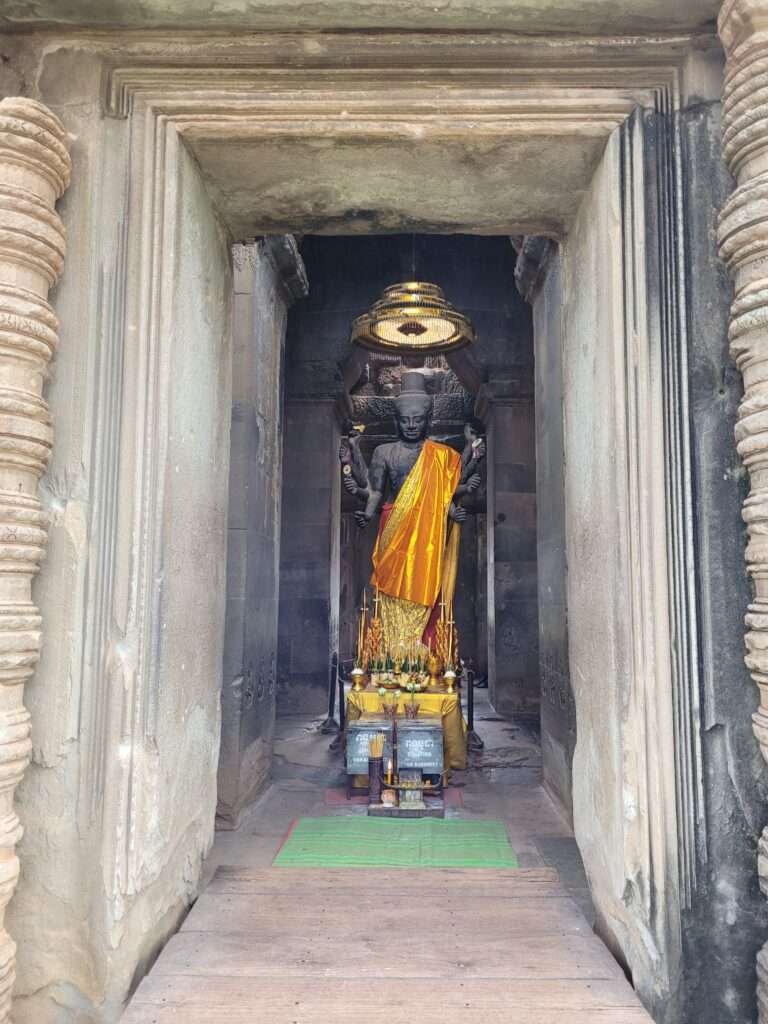
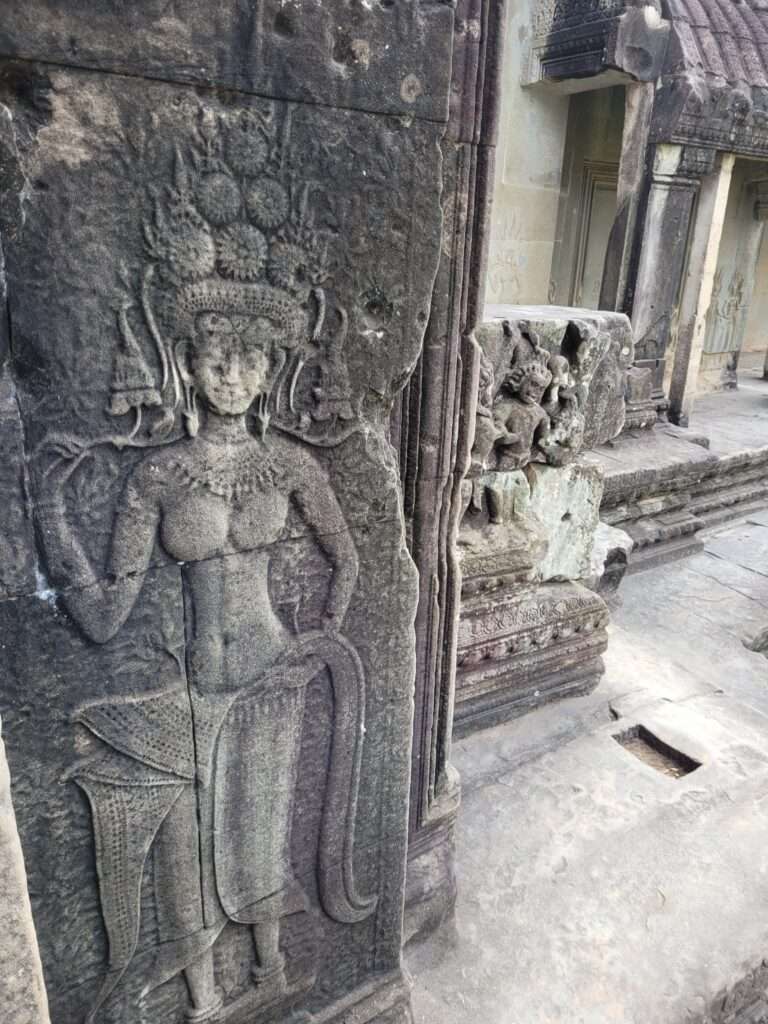
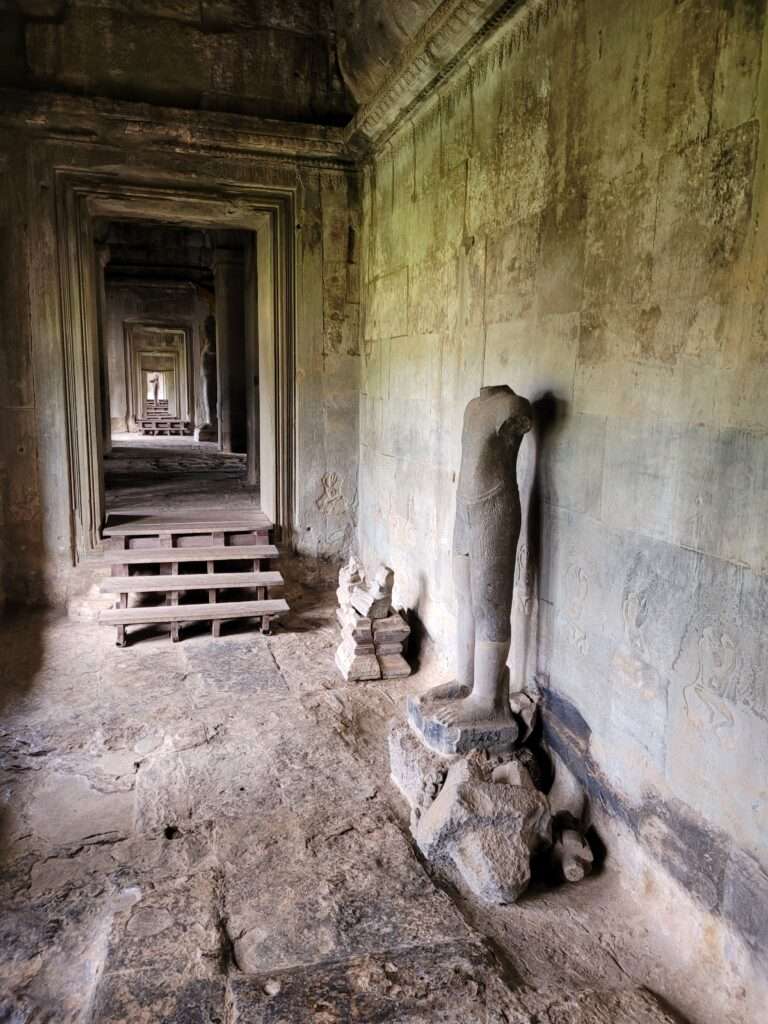
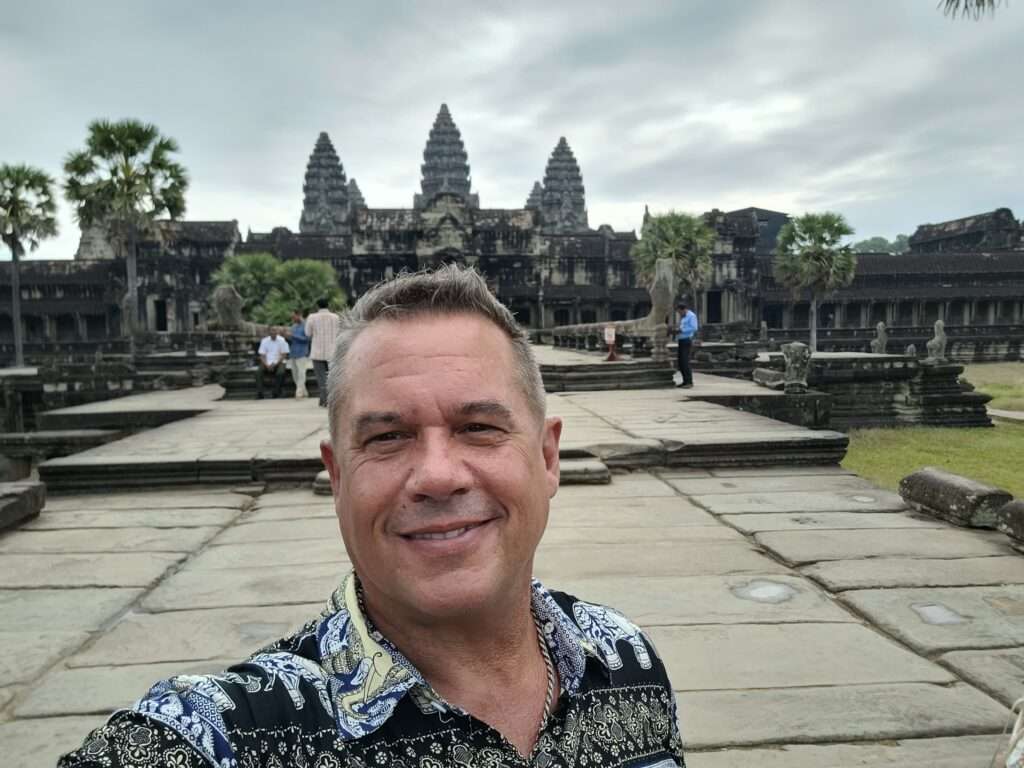
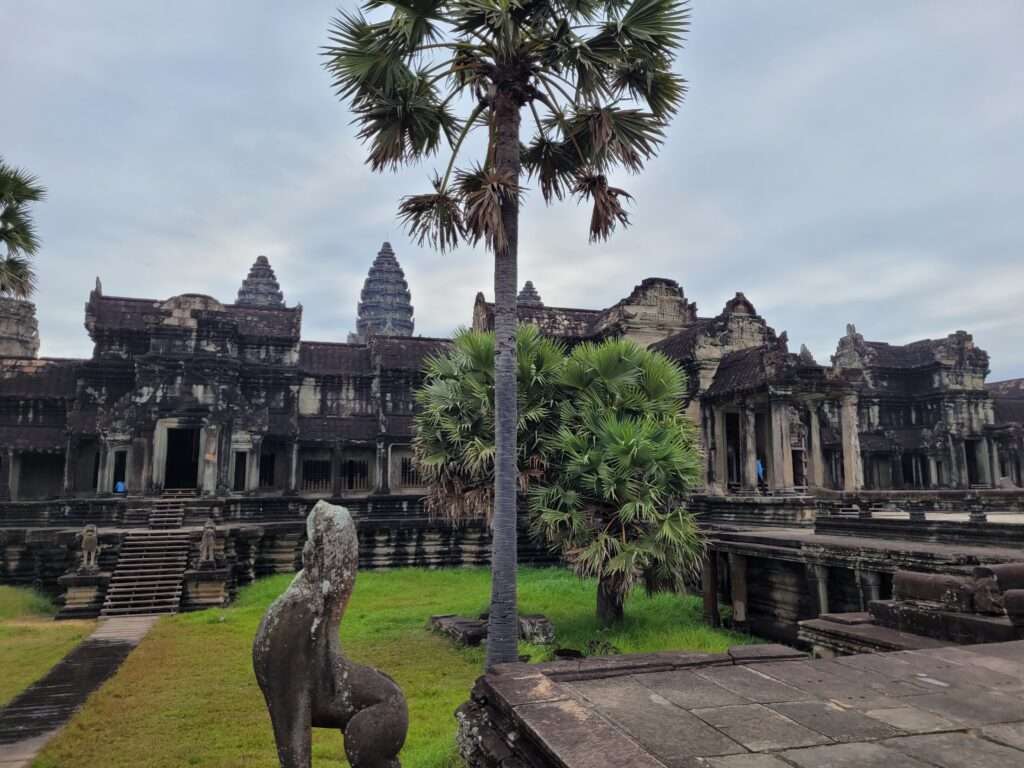

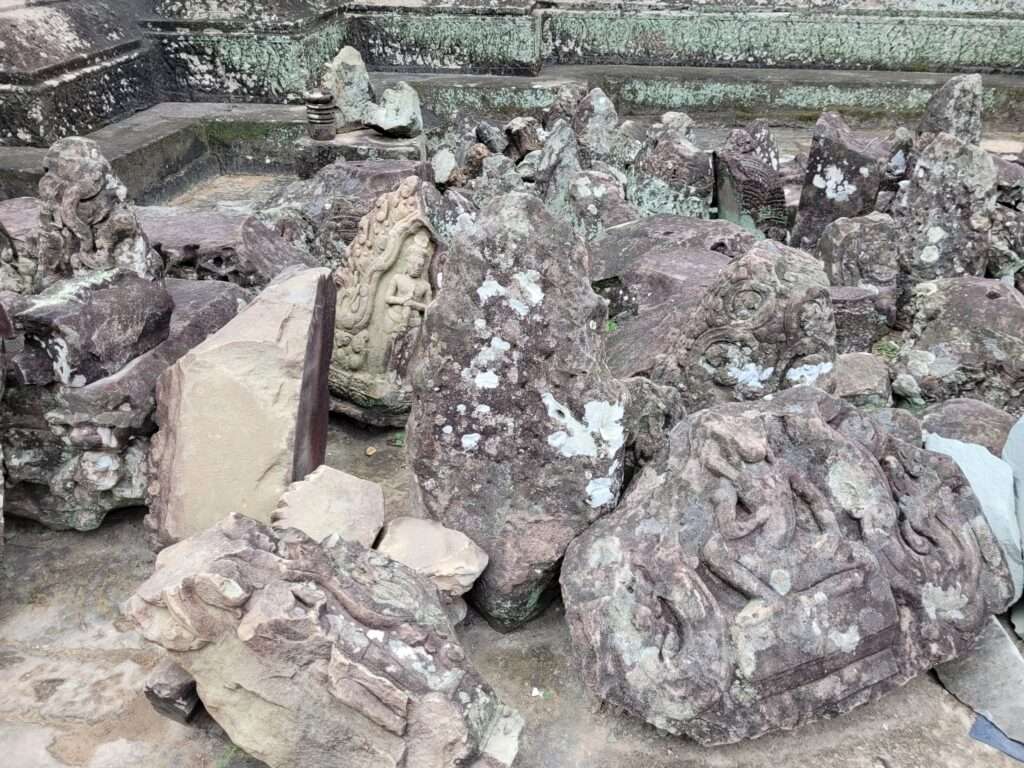

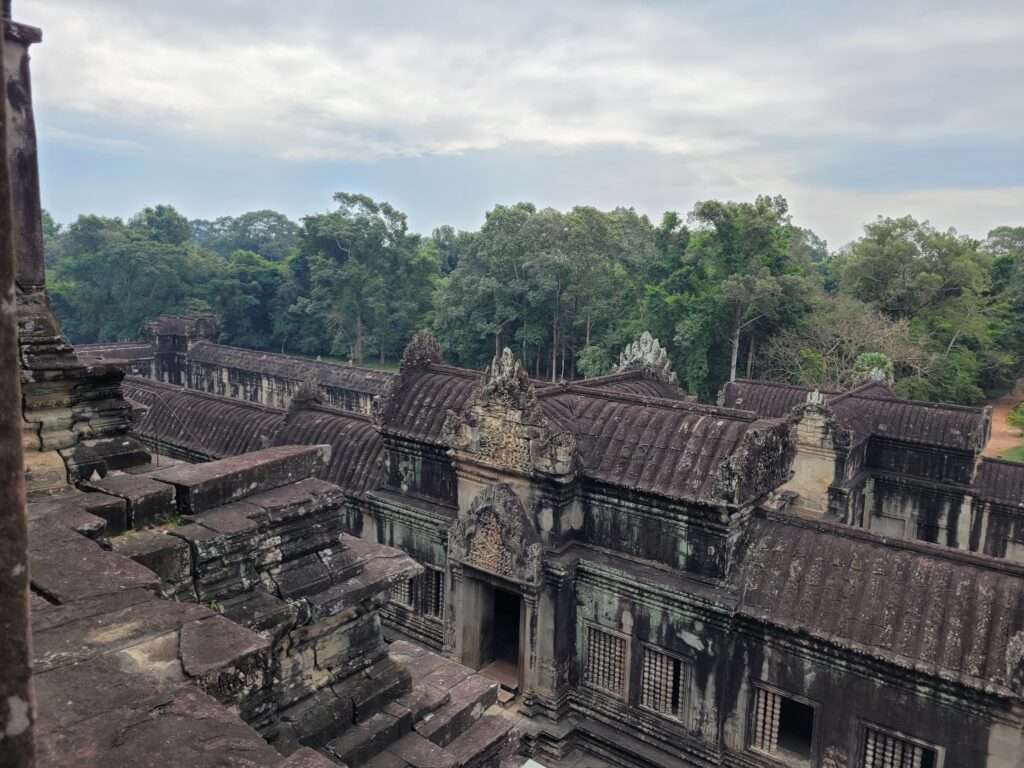
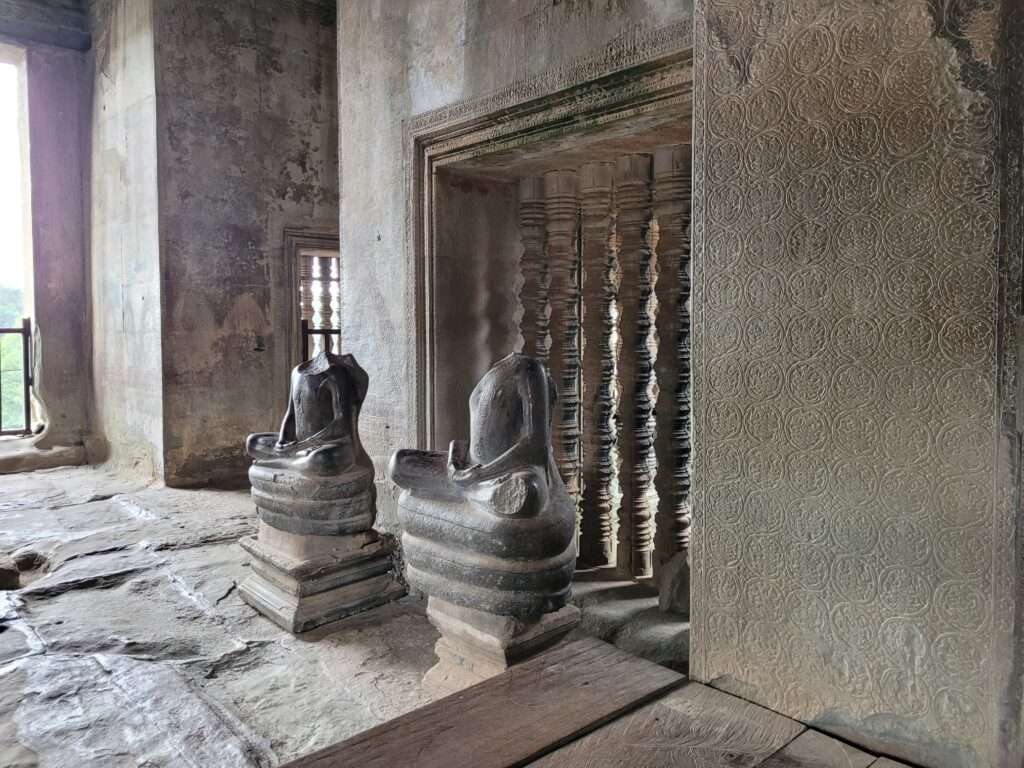
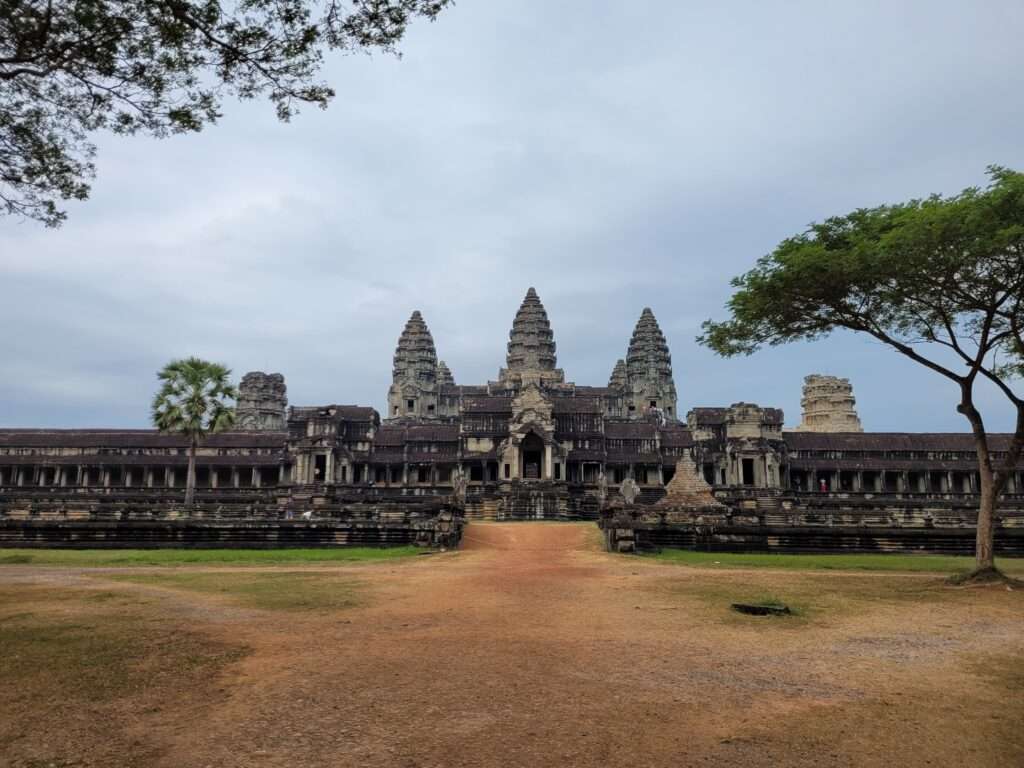
Our next stop is the enchanting Ta Phrom, famously known as the “Tomb Raider” temple. As we wander through the labyrinthine corridors, we’re greeted by the haunting beauty of tree roots snaking around the ancient stones, reclaiming the temple in a delicate dance with nature. The atmosphere is surreal, transporting us to a time when civilizations thrived amidst the jungle.

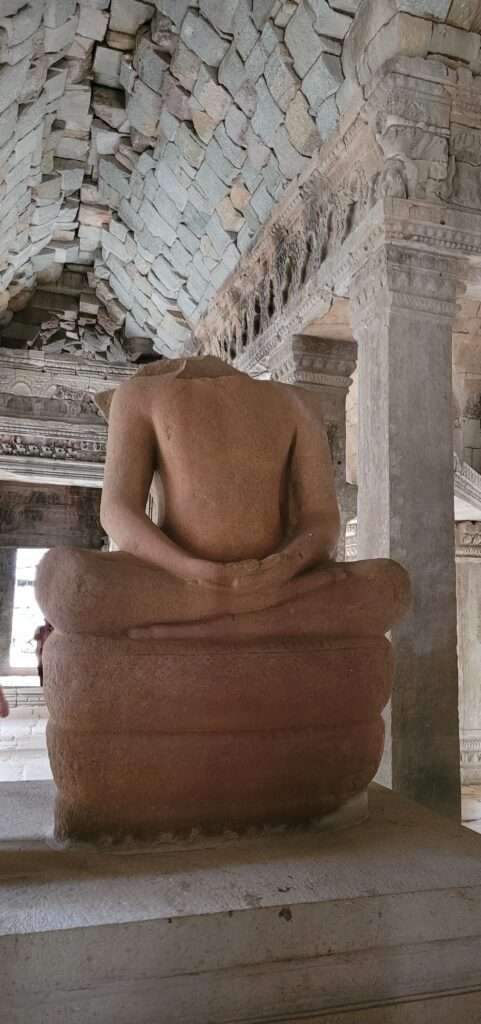

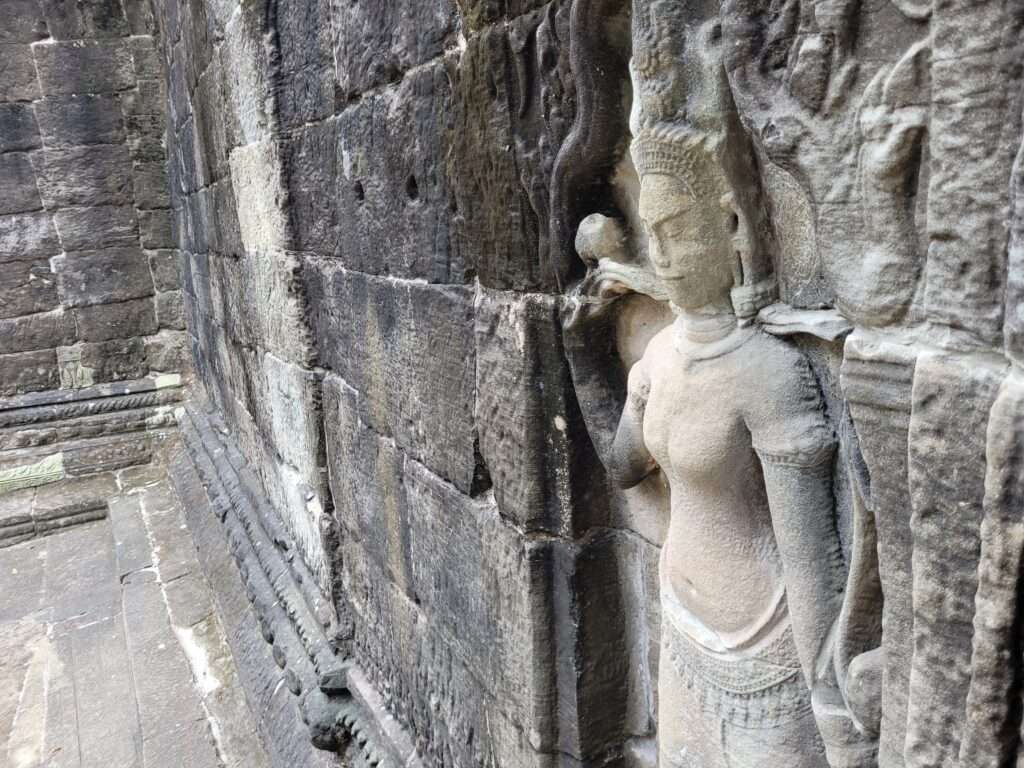
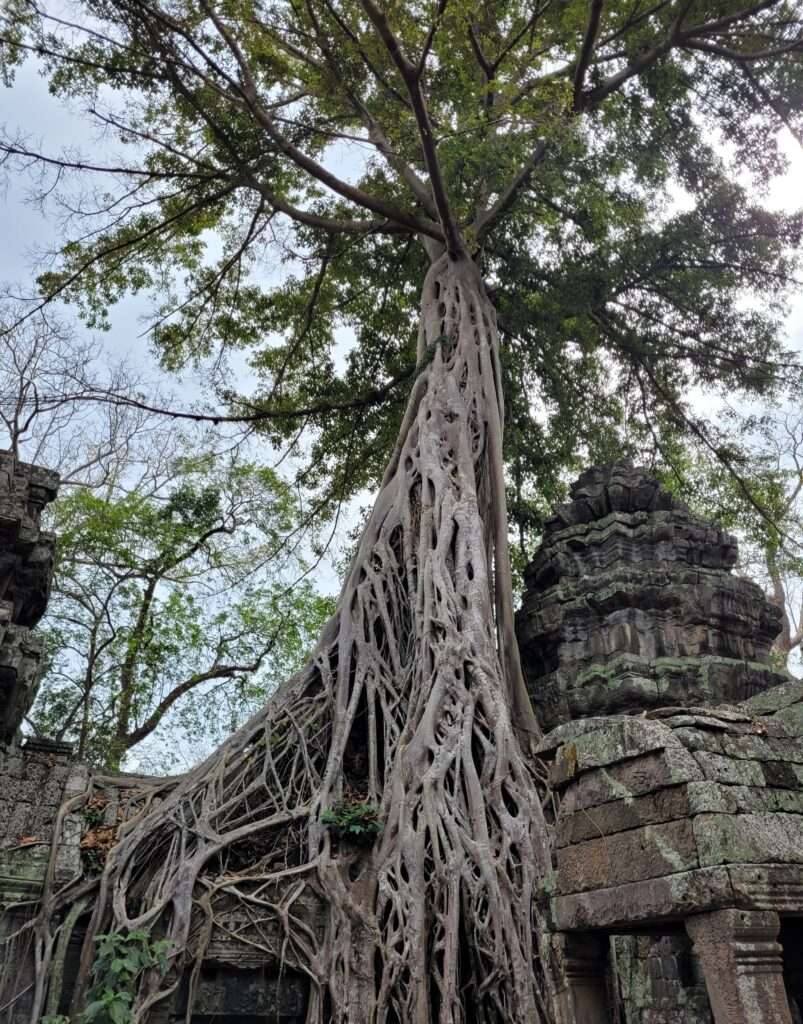
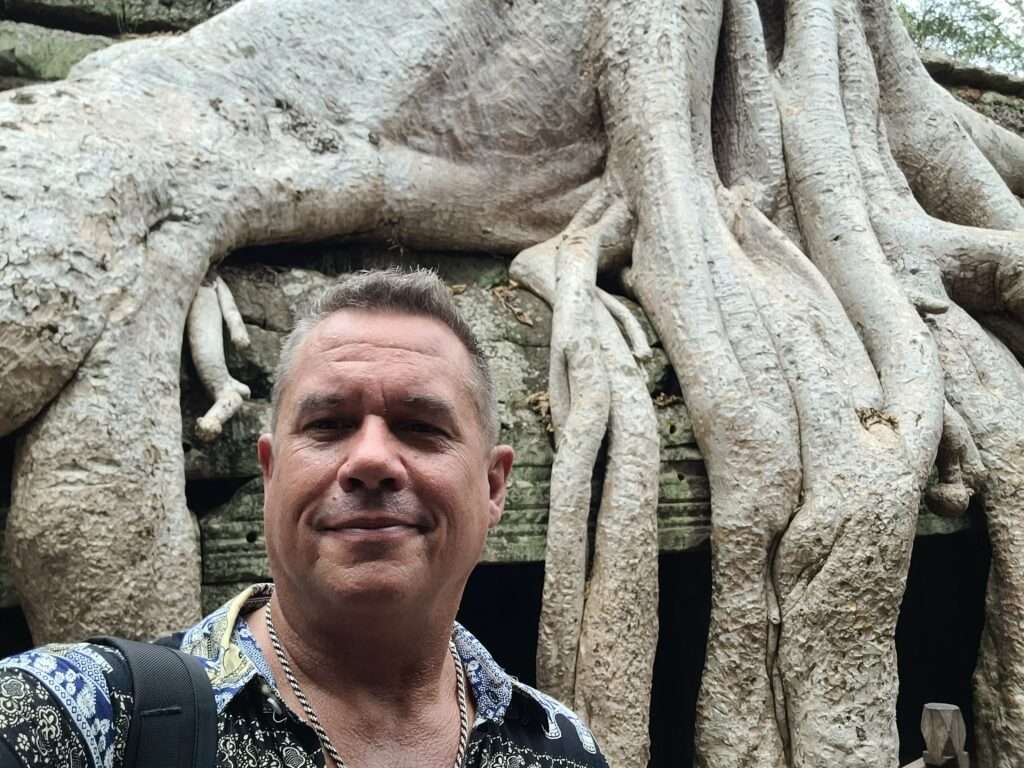

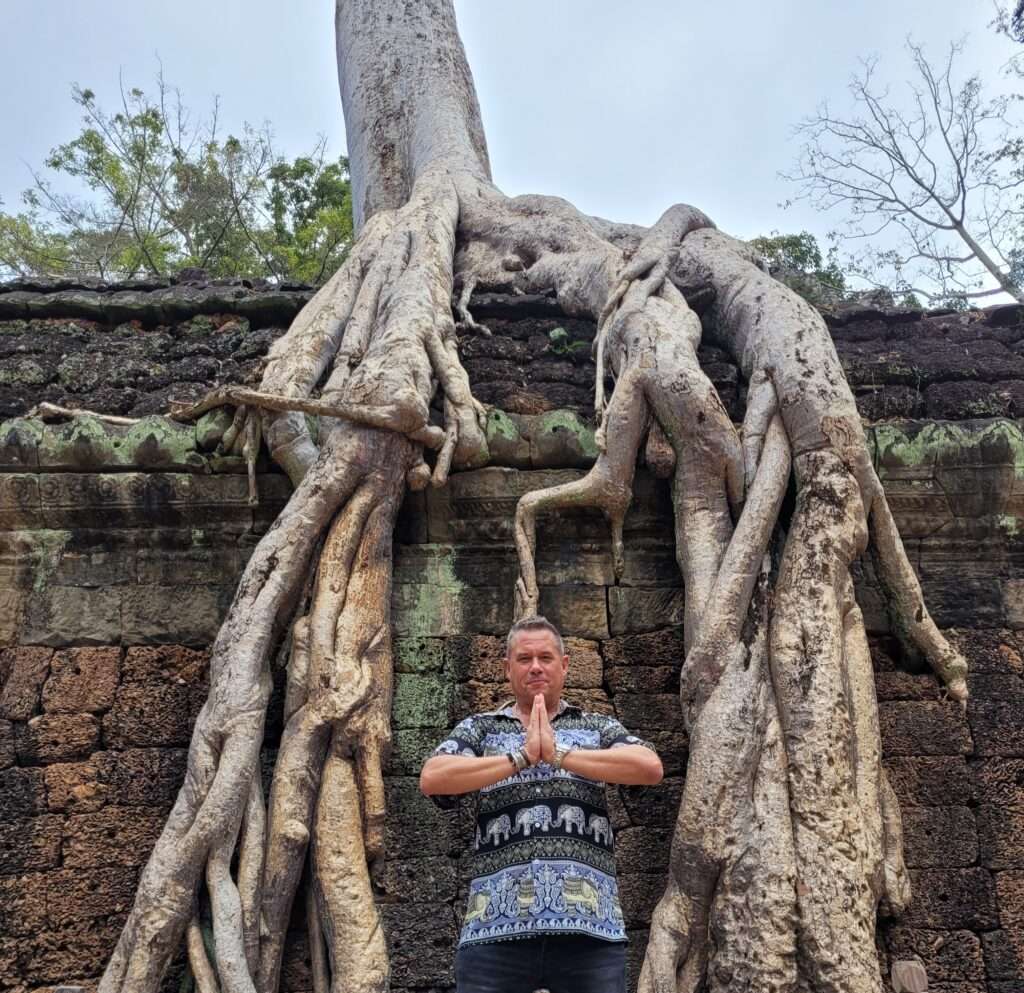
The next venture, is into the heart of Angkor Thom to discover the enigmatic Bayon Temple. Its iconic towers adorned with massive stone faces whisper tales of a bygone era. The intricate carvings depict scenes of everyday life, battles, and celestial beings, inviting us to unravel the mysteries within each stone smile.
As we explore the labyrinth of galleries and ascend the steep stairs, we’re rewarded with panoramic views of the surrounding jungle. The juxtaposition of ancient stone and lush greenery creates a scene that’s both surreal and captivating.
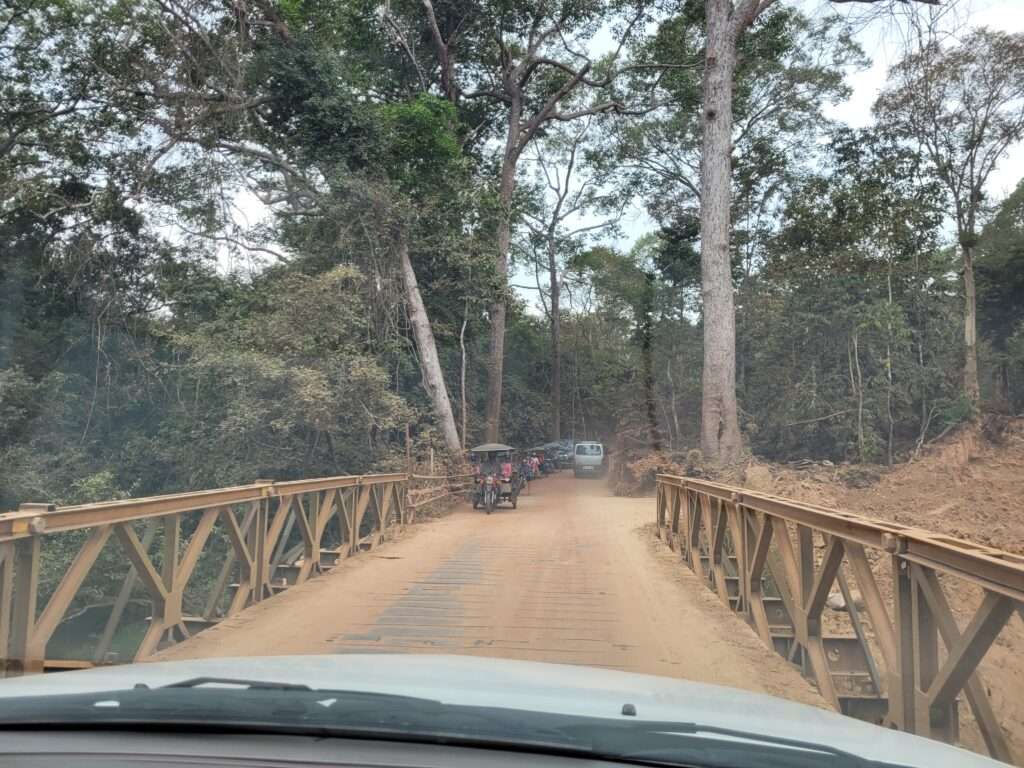


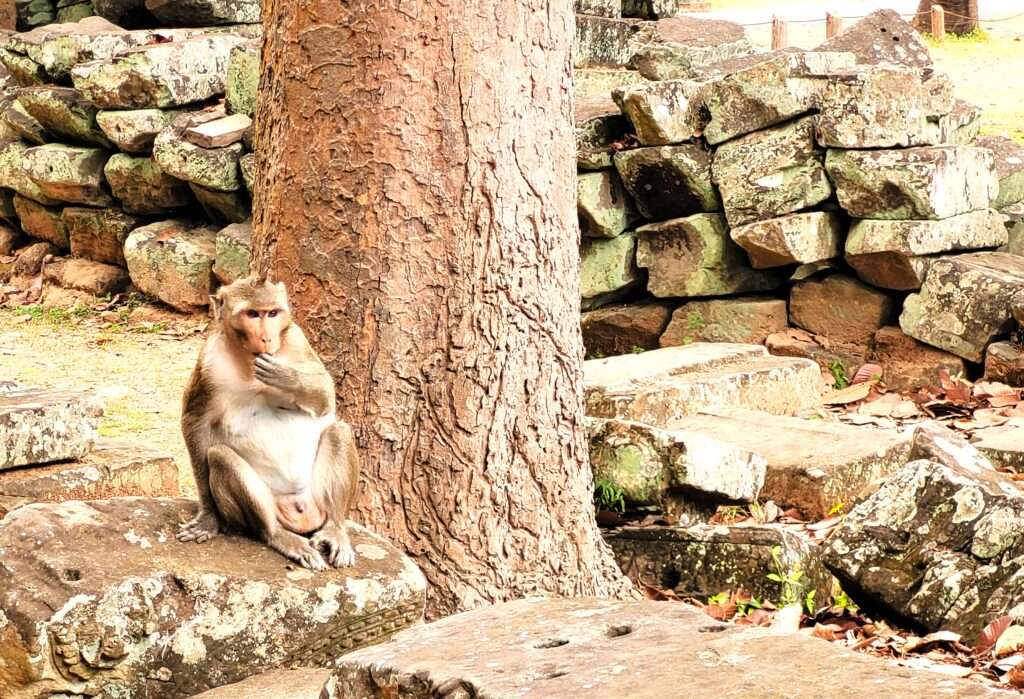

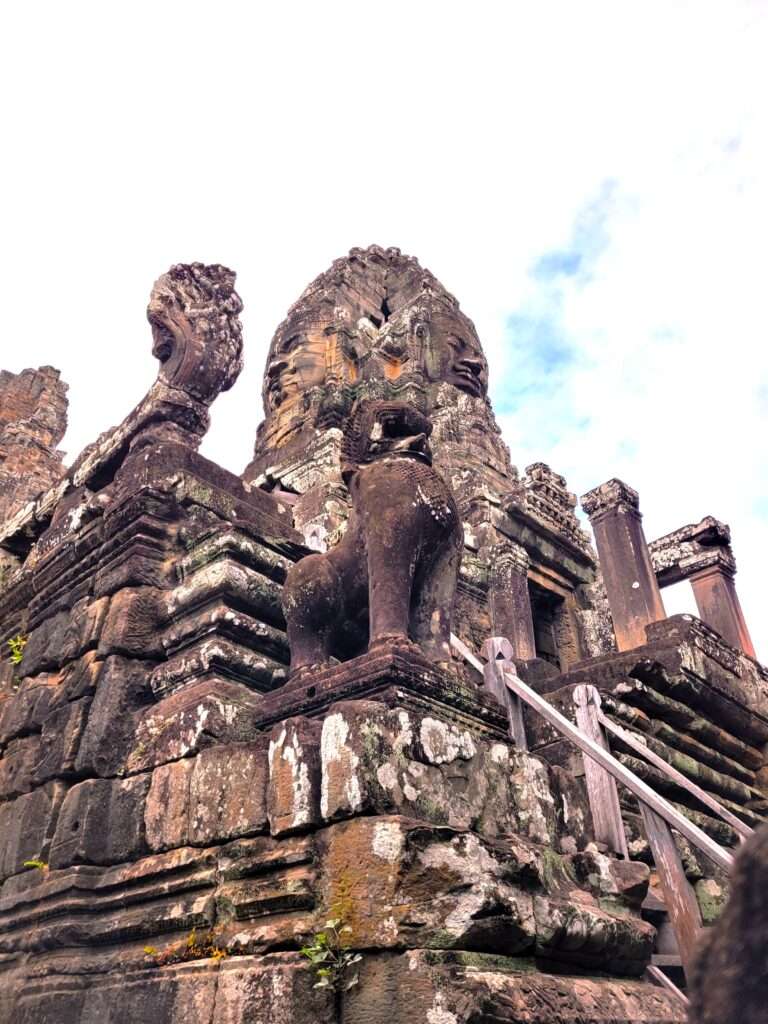

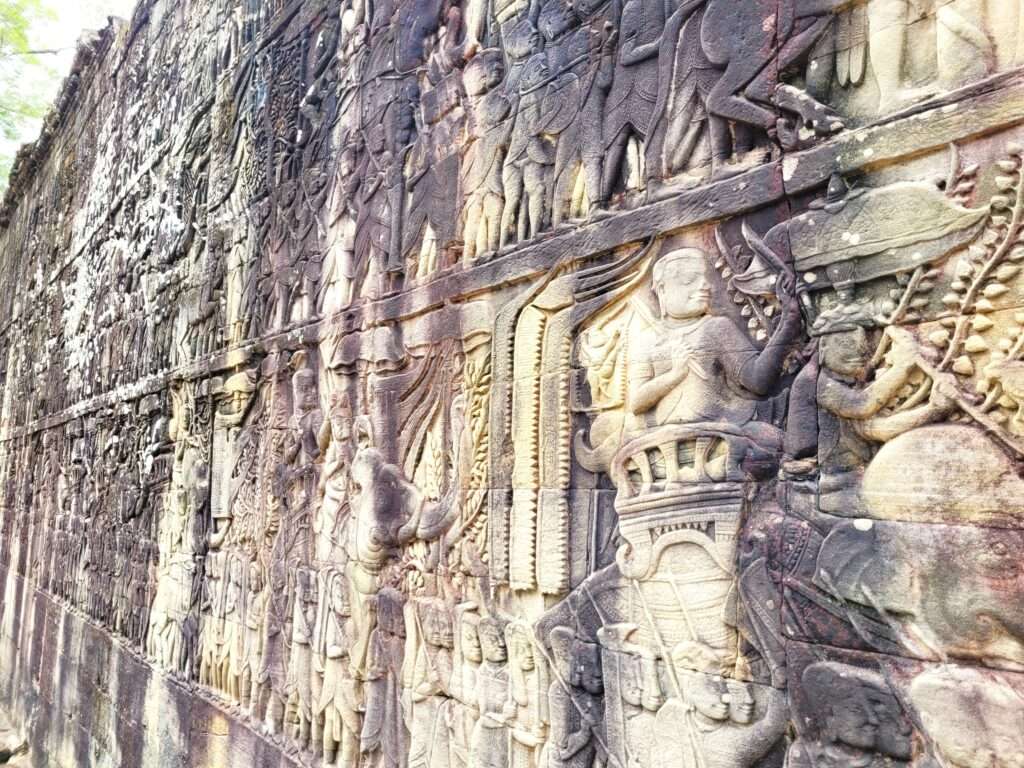

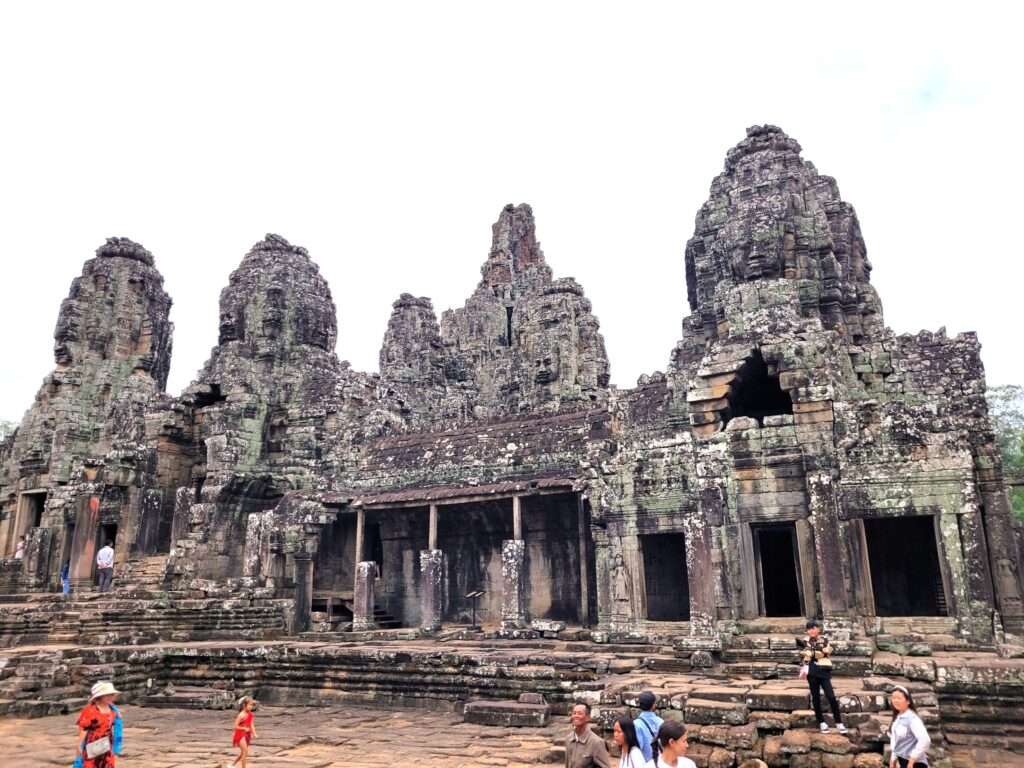
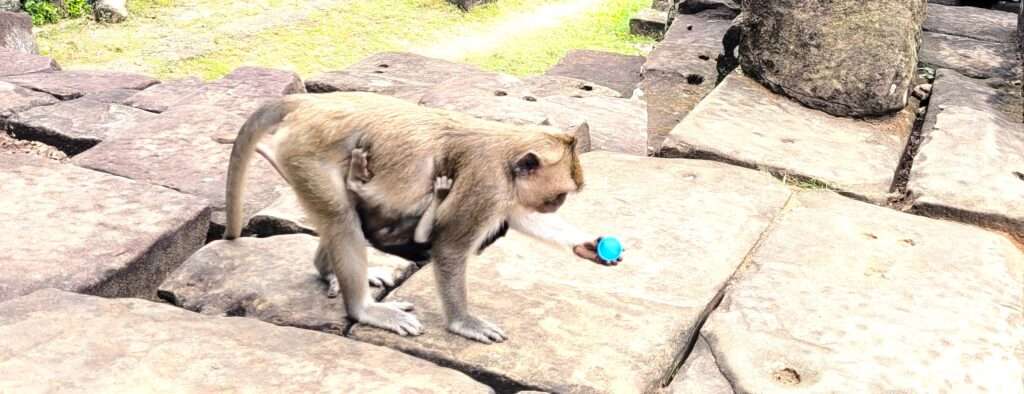

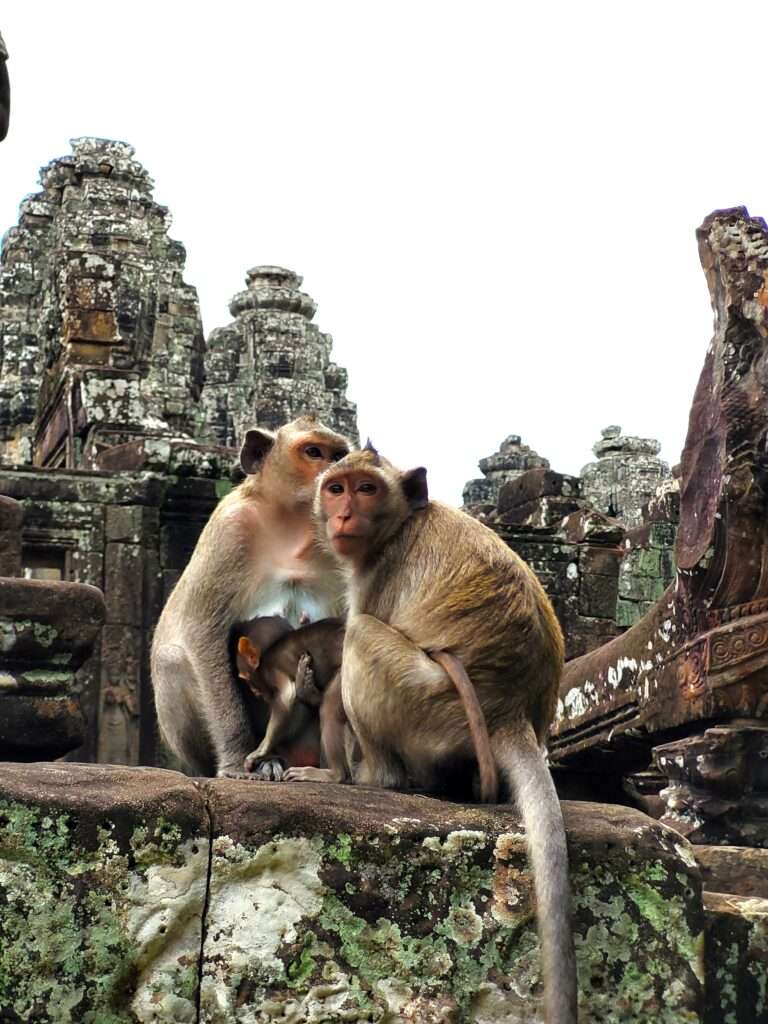

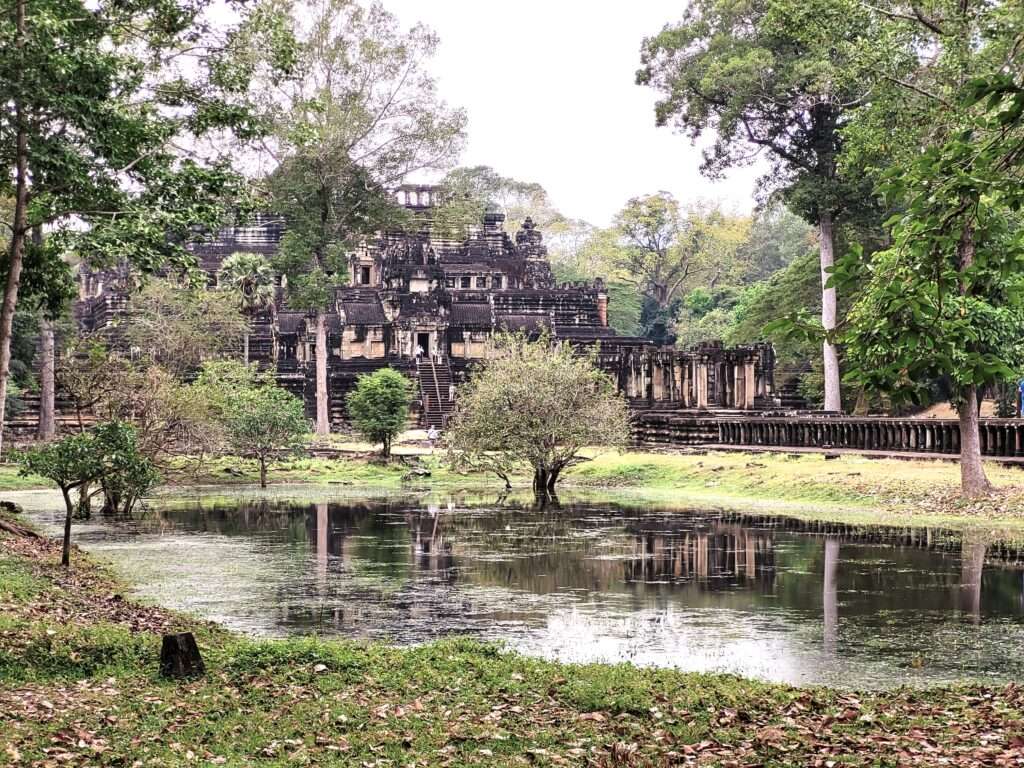

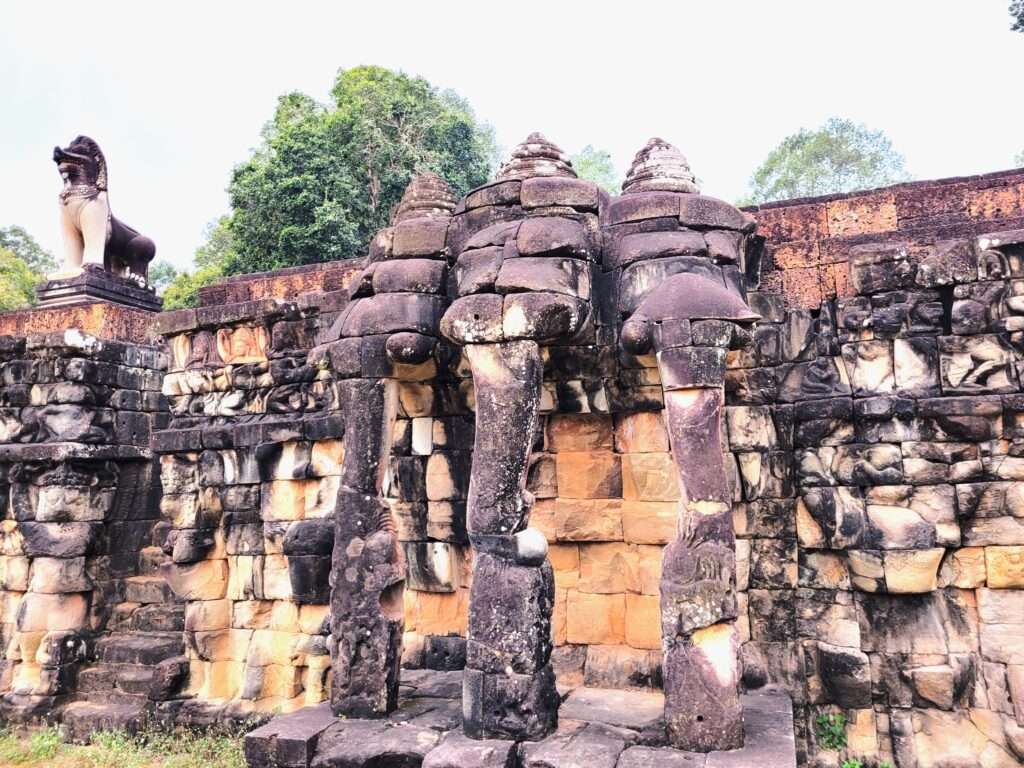

Our adventure takes an unexpected turn as we encounter the mischievous residents of Angkor – the wild monkeys. These playful creatures swing from tree to tree, seemingly unfazed by our presence. We share a moment of connection, marveling at the vibrant wildlife thriving amidst the ancient ruins.
As we capture candid moments of monkey antics, we’re reminded that the magic of travel lies not only in the historical monuments but also in the spontaneous encounters with nature’s inhabitants.
Embarking on a journey through Cambodia, one cannot ignore the shadow that lingers over its recent history. In the heart of this resilient nation lies a chilling chapter – the Killing Fields, a haunting reminder of the atrocities committed during the Khmer Rouge regime under Pol Pot. I embarked on a solemn pilgrimage to pay homage to the lives lost, to bear witness to the unimaginable, and to understand the indomitable spirit of the Cambodian people.
In the heart of Siem Reap, amidst the ancient wonders of Angkor Wat and the bustling energy of the city, lies a somber testament to Cambodia’s painful past—the Killing Fields Monument. As I approach the Killing Fields Monument in Siem Reap, a heavy stillness hangs in the air. It’s a stark contrast to the vibrant atmosphere surrounding Angkor Wat, a poignant reminder that history’s wounds are often hidden beneath the surface.
The memorial’s entrance reveals a towering structure adorned with skeletal figures, a symbolic representation of the lives lost. It is a silent invitation to delve into the stories that echo through time, stories that demand to be heard.

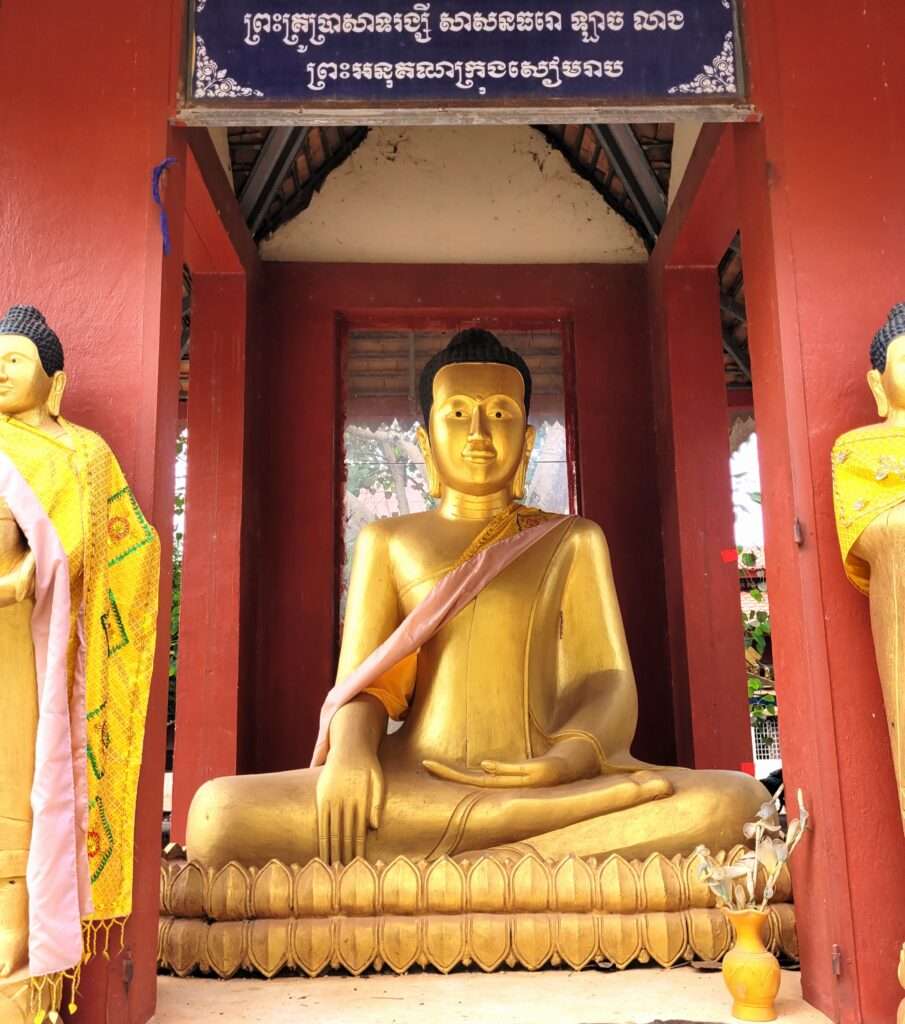
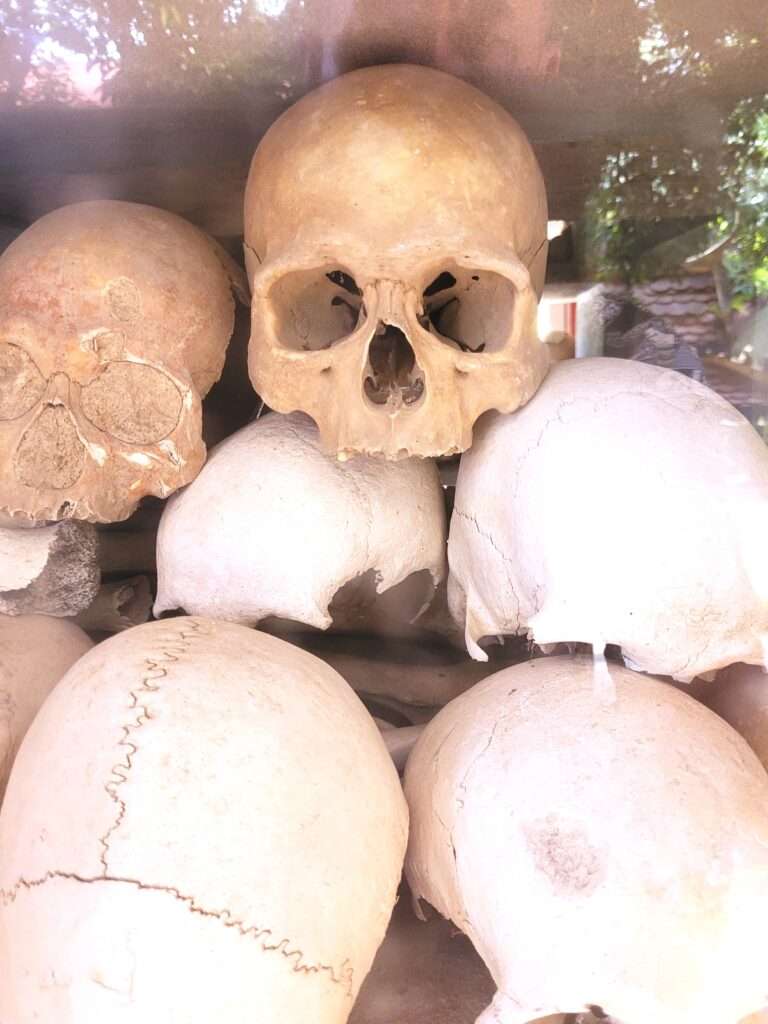

The path through the Killing Fields is marked by haunting landmarks—the mass graves, the remnants of former structures, and the chilling Killing Tree where infants met unimaginable fates. The audio guide, a companion on this solemn journey, provides a heart-wrenching narration of the atrocities committed on this very ground.
As we tread lightly on the hallowed ground, we come face to face with the Memorial Stupa—a towering structure filled with the skulls and bones of victims. Each relic speaks volumes, giving voice to the countless lives extinguished during this dark chapter in Cambodia’s history.
The skulls and bones within the Memorial Stupa are not just artifacts; they are the faces of the forgotten. Each skull, meticulously arranged, represents a life cut short, a story left untold. The sheer magnitude of the memorial leaves an indelible mark, urging visitors to confront the reality of the genocide.
Photography is allowed, but the camera lens feels inadequate in capturing the depth of emotion stirred by the sea of hollow eyes staring back. It’s a moment of silence, a moment of acknowledging the pain, and a moment of understanding that the scars of history run deep.
Leaving the Killing Fields Monument, the weight of the experience lingers. It’s not just a historical site; it’s a sacred space for reflection and remembrance. As travelers, we carry with us the responsibility to ensure that the stories of those who suffered are not buried with them.
In Siem Reap, among the temples and vibrant markets, the Killing Fields Monument stands as a poignant reminder that the past is an integral part of Cambodia’s present. The resilience of the Cambodian people shines through as they confront their history with openness and a commitment to building a future free from the shackles of the past.
The visit to the Killing Fields Monument in Siem Reap is not an easy journey, but it is a necessary one. It’s an act of bearing witness to the pain, acknowledging the suffering, and paying homage to the resilience of a nation. As we depart, let us carry the stories of the fallen in our hearts and commit to a world where such atrocities are never repeated. Cambodia’s past is etched in the bones of the Killing Fields, but its future is shaped by the unwavering spirit of those who survived.
As we bid farewell to Siem Reap, the memories of Angkor Wat, Ta Phrom, and Bayon Temple linger in our hearts. This journey through time has left an indelible mark, weaving together the ancient and the natural in a tapestry of wonder.
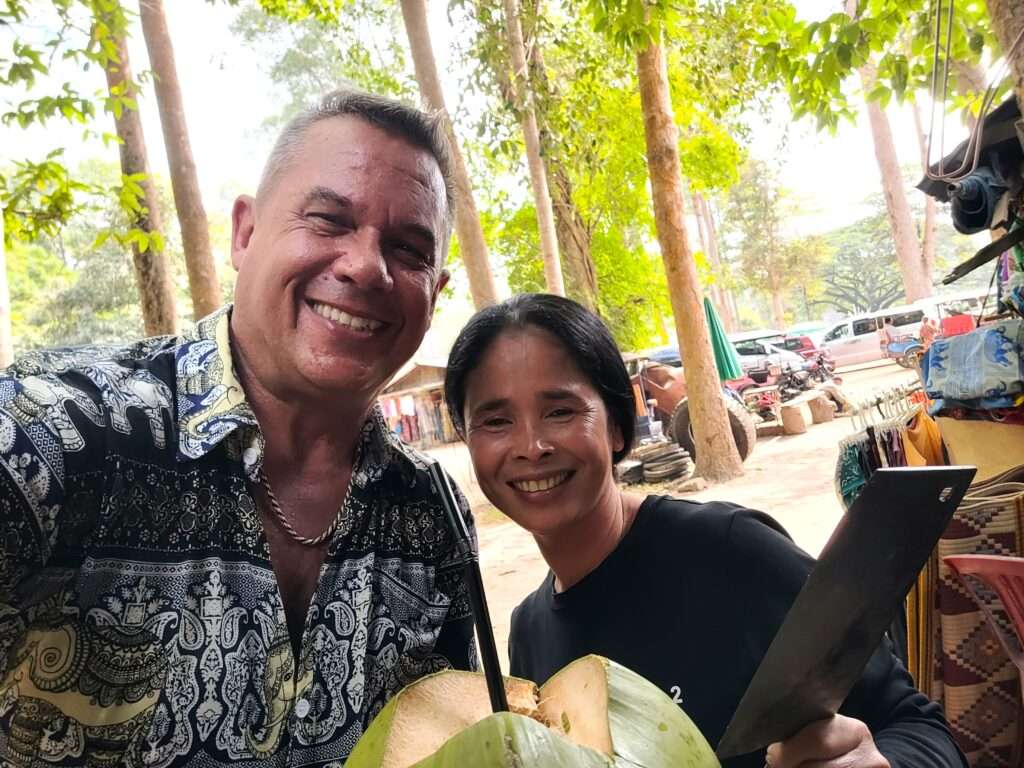
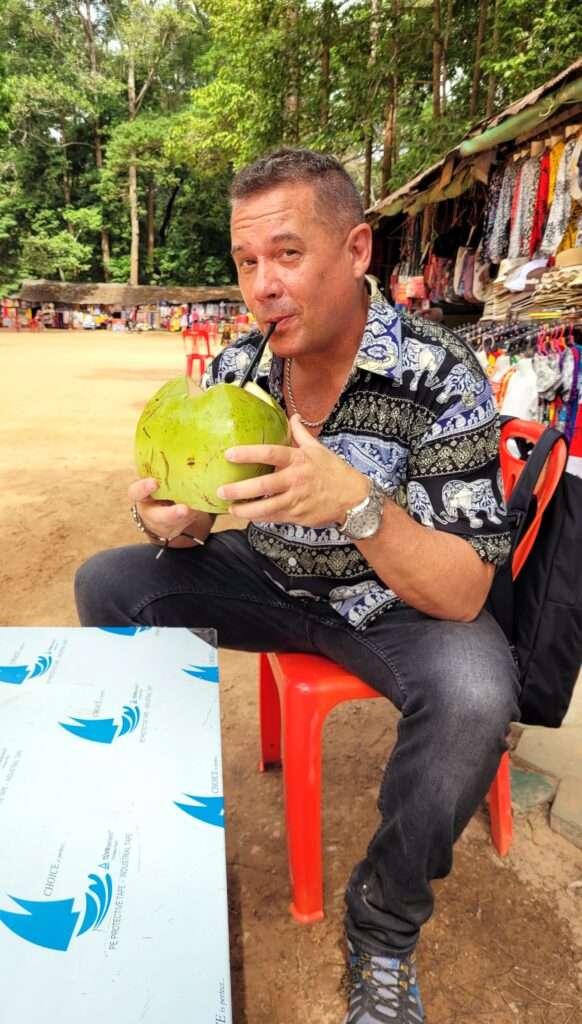
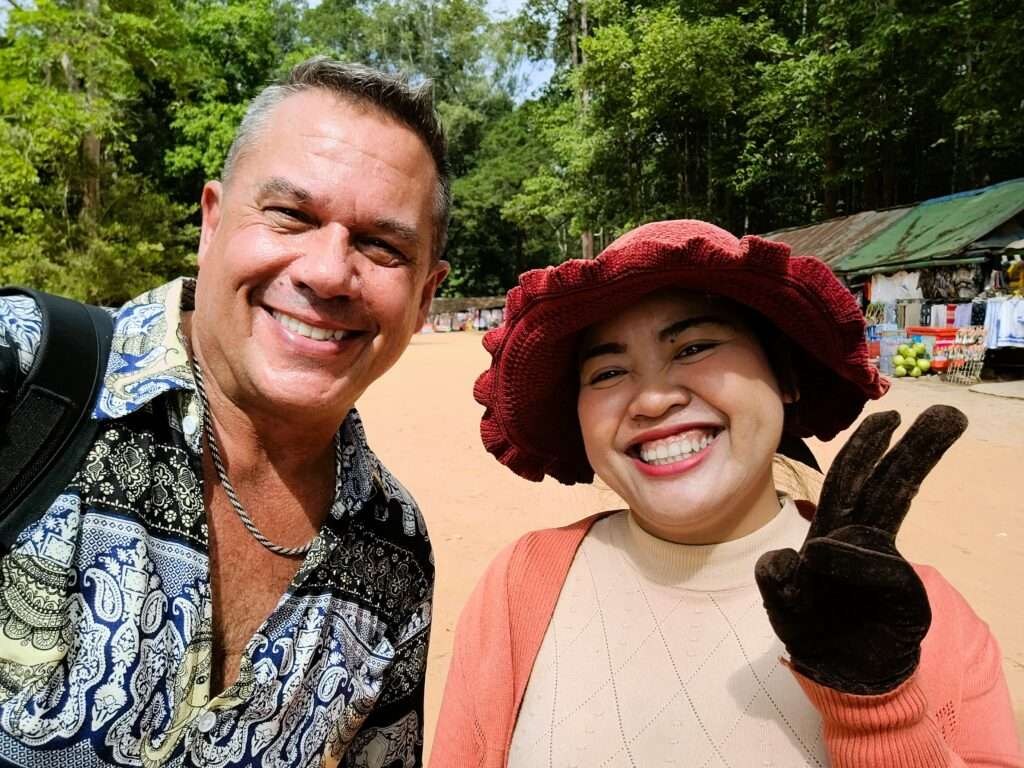


Cambodia’s rich history, vibrant culture, and the allure of its temples make it a destination like no other. From the bustling streets of Siem Reap to the serene beauty of Angkor, this trip has been a rollercoaster of emotions and a testament to the enduring legacy of the Khmer Empire. Until next time, Cambodia – a land where every stone tells a story, and every smile echoes through the ages.
Scroll down below the comment section (leave a comment if you like), to read the next post and discover the next adventure…

